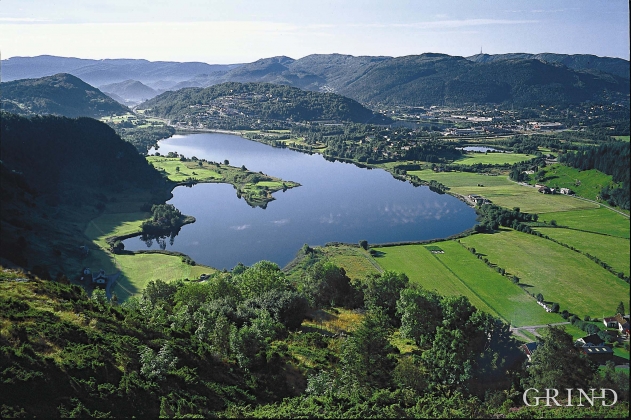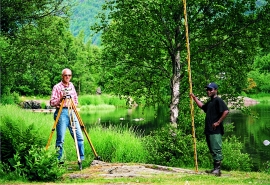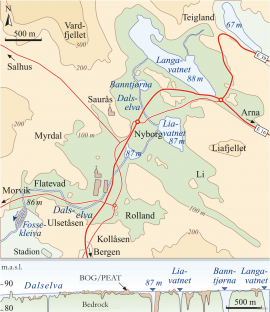Published: 10.06.2015 | Author: Inge Aarseth
Lake Langavatnet, toward the south. (Svein Nord)
PLATEAUS BETWEEN RIDGES
Most associate Åsane with ridges, naturally enough (the Norwegian word for "ridge" is "Ås"). A lesser noticed trait in the landscape are the unusual flat areas that lie between the ridges. The Dalselva River, which was channeled at the end of the 1950s, runs down only 2.5 metres from Lake Langavatnet by Vågsbotn to Flatevad, where it goes over into rapids by Fossekleiva. The layers of gneiss stand nearly vertically, and the mountain surface is so even that one might think it had been planed with a planer.
This mountain landscape does not belong to the strandflat that we otherwise find remains of both out toward By Fjord and Sør Fjord. The area has only one narrow outflow by Flatevad and, in addition, lies roughly 30 metres too high. This landscape must have been formed in the same way as the Herlandsnesjane and shoreline along Lake Storavatnet on Osterøy Island: through frost shattering of the bedrock along the edge of first one, and then several lakes in "Åsanegryta" during the ice-free periods of the Ice Ages. When the glaciers covered Åsane, they carved out only a few small troughs along zones of weakness, and this created the lakes that are there today.
Geologist Inge Aarseth and assistant Bede Anele Nwosu survey mountain surface by Lake Liavatnet. (Karen Cecilie Lowzow)
- Aarseth, I. 2003. Geologiens viktigste prinsipp: «Nåtiden er nøkkelen til fortiden». Eksempel fra Osterøy og Åsane i Hordaland. Naturen 3:2–11.





